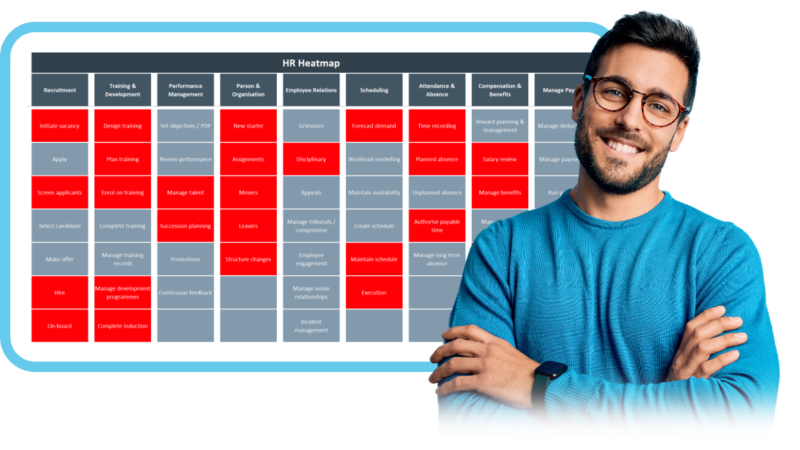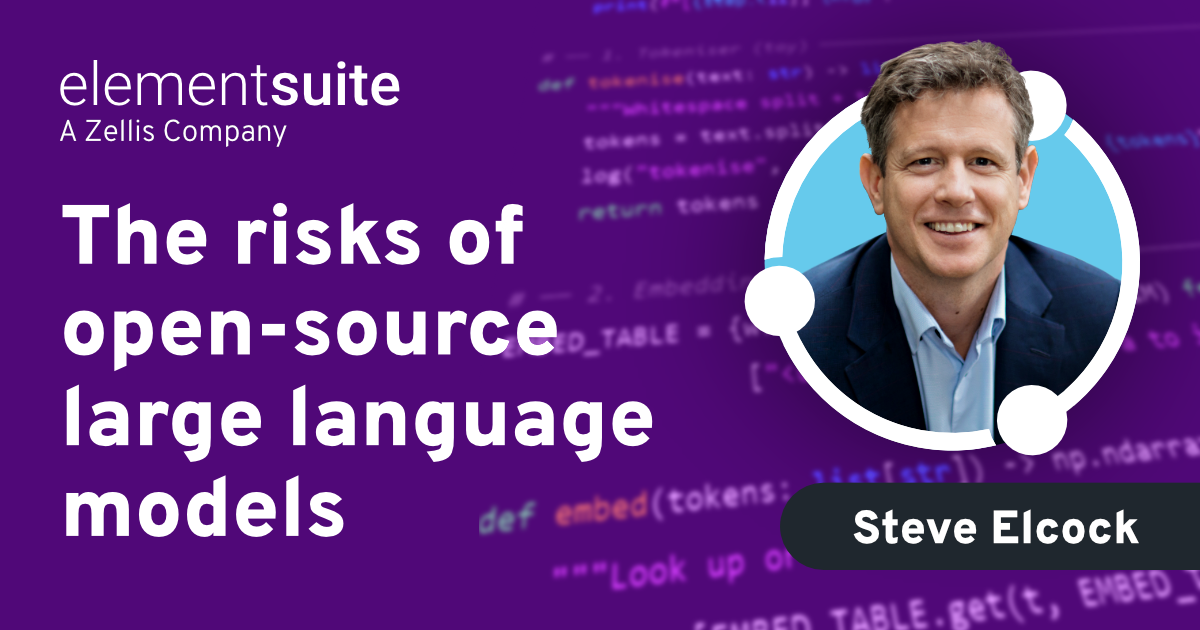The world of work is undergoing a seismic shift. With technology rapidly advancing and changing the way we work, the rise of the gig economy, and the ever-growing pressure to reduce operational costs, there is a growing need for companies to adapt their talent structures in order to stay competitive.
Take, for instance, a recent report from McKinsey, “A New Future of Work: The Race to Deploy AI and Raise Skills in Europe and Beyond”. It revealed that as much as 30% of hours worked could be automated by 2030 due to advances in generative AI. Additionally, research by the Confederation of British Industry (CBI) also highlights that 94% of UK workers will need reskilling by 2030 to keep up with these changes.
As a result, HR leaders are facing the challenge of rethinking their talent structures and ensuring they have the right people in the right roles and the right time to drive success in this new landscape. This often means redefining roles, reskilling employees, and restructuring the workforce.
Redeploy talent, not reduce workforce
As a result of turbulent economic weathers, matched with the changing dynamics of the workforce as a result of technological advancements and the rise of independent workers, business leaders across the globe are being pressured to reduce operational costs. And this often results in the reduction of headcount as a quick fix.
However, research suggests that, in fact, these cost-cutting measures do not actually result in any profitability or beneficiary financial outcomes. Instead, it has been found that it can have the complete opposite effect. The same research found that downsizing has actually been found to result in a lack of employee trust and commitment, increased turnover costs, and can even damage an organisation’s public reputational capital.
Yes, some roles may eventually become redundant due to automation, but this should not be the only consideration when restructuring talent. To avoid the loss of institutional knowledge and retain employees’ trust HR must think carefully about how they can move people within the company and utilise their skills and expertise in different areas.
Taking the HR department itself as an example, AI can augment human capabilities such as payroll and administrative tasks, presenting an opportunity for HR professionals to expand their skills and become even more valuable strategic partners within the organisation. Similarly, employees across the business can be upskilled as AI takes on those tedious mundane tasks.
In short, they need to redirect their focus on redeployment and cross-skilling rather than solely relying on reducing headcount as a solution.
Learn why Centre Islands chose elementsuite to align their workforce with labour demand
Start building future skills internally now
New skill requirements are emerging every day. Think back to when the internet was first introduced in the early 1980’s. Many feared that traditional roles, especially in areas like retail and customer service, would be made obsolete as digital tools and e-commerce took over. However, rather than eliminating these jobs, the internet transformed them. Employees learned new skills like managing online platforms, digital marketing, and customer support through email and live chat. Entirely new roles emerged, such as social media managers, SEO specialists, and e-commerce coordinators. The same is true today. Technology may be augmenting some traditional jobs, but new roles are also being created that require skills that perhaps didn’t exist before.
As the custodians of the workforce, HR must start identifying these future skills needs now and begin building them internally through personalised training pathways, should they want to remain strong and competitive.
How?
Understand the current state of the workforce
First, you need to understand the current state of the workforce. What are the current skills of your workforce?
There are many ways to do this, from asking employees to claim their skills through employee surveys to assessing job descriptions to evaluating performance management reviews.
You should also have a record of your employees’ skills on your HR system, allowing them to update any qualifications, skills, and experiences within their own record at their own pace. This will give you a clear picture of your organisation’s current skills and expertise, allowing you to identify any skills gaps or areas for development.
Identify future skills needs
Once you have an understanding of your current workforce, it’s time to start looking towards the future. What new technologies, processes, or trends are emerging in your industry? How will they impact your business, and what skills will be needed to adapt and thrive?
Start off with your own department. Using a heatmap, identify what tasks can be automated with AI within the HR department and process.
By using a heatmap to visualise HR operating Model on a page, and RAG (Red/Amber/Green), your levelled HR functions, you can visually identify and highlight the tasks and processes that consume excessive time. These highlighted areas represent prime opportunities for AI-driven optimisation.
For instance, as shown in this example HR department heatmap, tasks such as resume screening, scheduling interviews, and managing routine employee queries can be marked as high-priority targets for AI implementation.
Organisations can significantly enhance efficiency by focusing on these areas, allowing HR professionals to dedicate more time to strategic initiatives such as talent development, employee engagement, and organisational planning.

Next, do the same for other departments within your organisation and undergo a skills gap analysis and demand forecasting exercise to anticipate future talent needs based on business goals and strategies. To do this effectively, however, integrating your business tools, such as project management tools, production plans, and sales forecasts, to identify the skills that will be needed.
Develop personalised learning pathways
With a clear understanding of both your current and future skills needs, develop personalised learning pathways for employees to upskill or reskill. This can include traditional classroom-based training, online learning programs, mentoring or coaching sessions, job rotations, and more. You may want to start with how employees can use AI by starting with sessions on prompt engineering, for instance.
Personalised learning pathways allow employees to focus on building the specific skills they need for their role and the company’s future direction. They also show an organisation’s commitment to employee development, improving retention rates and employee satisfaction.
In fact, you can use AI to see how pathways will change as a result of AI! A 24/7 HR assistant like ELLA, for example, can analyse vast amounts of data to predict future skills requirements and provide tailored learning recommendations for each employee. By integrating AI into your HR platform, you can easily and automatically identify the most effective training resources, track progress with precision, and make data-driven decisions about redeploying talent.
As technology evolves faster than seasons change, upskilling and reskilling is time-critical. You want your employees to be on the ground running for when the new skills become in high-demand.
Then, once the training is complete, you can redeploy these employees to new roles or departments that align with their newly acquired skills and expertise.
To make this process easier, it is highly recommended that you invest in an HR platform that reduces HR system silos and takes into consideration employees skills and matches it with business requirements to allow to AI-powered automatic recommendations for employee scheduling and role changes.
Essentially, HR should be leading the charge in building a highly-skilled, adaptable, and future-proof workforce. By moving people, not just reducing headcount, and investing in personalised training pathways, HR can ensure that their organisation is ready for any talent restructure that may come its way.
Maintaining a positive company culture during restructures
As mentioned earlier, when downsizing, it can have a ripple effect on employee morale and company culture. But, there are ways that HR can mitigate this impact and maintain a positive culture during times of restructuring.
Understand employee sentiment
While showing your commitment to reskilling and upskilling will help boost employee morale, it is highly recommended that you leverage your organisation’s sentiment when undergoing a talent restructure.
As the new era of AI reshapes the workplace, employee sentiment can be significantly impacted. The introduction of AI-driven processes may lead to anxiety about job security and uncertainty about the future. It is essential to acknowledge and address these concerns proactively, Clear communication about how AI will complement rather than replace human roles, combined with a strong focus on reskilling, can make a big difference.
Benchmark your employees’ engagement and satisfaction levels before, during and after the restructuring process. Conduct short pulse surveys, utilise the feedback, and be sure to share this insight with managers via your HR software.
Managers are a huge part of employee satisfaction and morale. So, sharing these insights with them is important, as they will be the drivers of initiatives that will maintain the culture and values during times of change. Discuss the employee feedback and strategies with these line managers and encourage them to take action and make improvements where necessary.
To make the survey question formulation easier, you could even leverage an AI tool such as ELLA. Designed for HR, by layering ELLA over your HR software, you can ask simple prompts such as, “Can you write a short pulse survey of 5 questions focused on employee morale?”
Simple AI-generated assistance will help save time and money on labour costs in itself. From there on, ELLA will provide you with (and send) the survey that has been customised to your organisation’s needs.
Ensure transparent communication
However, one of the most important elements in maintaining employee trust and engagement during a talent restructure is transparent communication. Employees need to understand the “why” behind the restructuring and the steps being taken to ensure that both the business and employees are positioned for success in the future.
This means being honest and open about the reasons for downsizing, as well as the potential impact it may have on employees. Communicate frequently and consistently through various channels such as town hall meetings, email updates, one-on-one conversations, and through your internal communications feeds. And make sure to create an environment of psychological safety that invites questions and concerns from employees to address any uncertainties or fears they may have.
Conclusion
In conclusion, talent restructuring is not just about reducing headcount or cutting costs. It requires a strategic approach that considers both the immediate and future needs of the business, while also taking into account the well-being and development of your employees.
By proactively identifying skills gaps, developing personalised learning pathways, maintaining a positive company culture, and ensuring transparent communication, as HR leaders, you will drive a highly-skilled, adaptable, and future-proof workforce for your organisation. And with the help of advanced HR technology such as elementsuite, this process can be more efficient and effective for all stakeholders involved.
The question is no longer whether you’re ready for a talent restructure. The question is: will you lead the transformation with empathy, strategy, and foresight to ensure your workforce and organisation thrive in the new world of work?
The future is yours to create. Contact us today to learn more about how elementsuite can support your talent restructuring journey.




